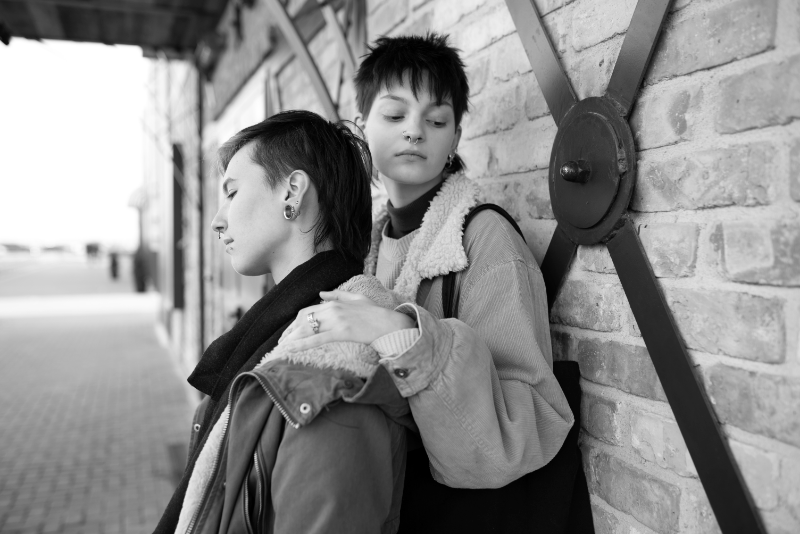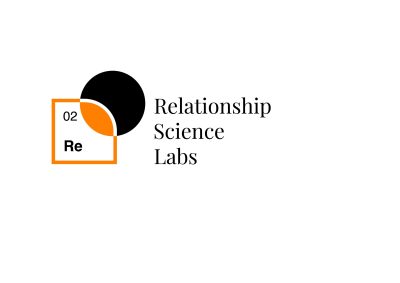In today’s world, pursuing love might feel like stepping into a maze of relationships and possibilities. Gone are the days when dating meant meeting someone from your town and going on predetermined dates.
Now, with a swipe or a click, you’re instantly connected to people worldwide, navigating relationships that don’t always fit the traditional mold. Ever heard of a “situationship” or found yourself curious about open relationships? Perhaps you’re one of many wondering: “What does commitment look like in a world that offers so many options?”
This article aims to unravel the complexities of modern relationships and explore how they’re reshaping ideas about intimacy, commitment, and love.
Whether you’re in a long-distance relationship, considering a polyamorous setup, or just curious about how dating is evolving, understanding these dynamics helps you make sense of modern love — and find a path that feels right for you.
Understanding the new types of relationships in modern love
Technology has created different kinds of romantic relationships. These new types of relationships present both opportunities and problems in how love is experienced. The following section will explore the different types of love and their implications for modern relationships.
Long-distance relationships enabled by technology
Video calls, messaging apps, and social media have made long-distance relationships accessible.
Couples can keep in touch across continents, preserving closeness with frequent communication. For example, long-distance couples can connect through video. However, these relationships encounter additional hurdles, such as time zone variations and the emotional toll of physical separation.
To thrive, couples must have excellent communication skills, trust, and the ability to deal with periods of loneliness.
Online and app-based relationships
The rise of online platforms and dating apps like Tinder, Bumble, and OkCupid has radically changed the dating landscape.
Nowadays, relationships usually begin with a swipe or a message, allowing people to meet potential love interests they might never have met otherwise. The simplicity of internet dating allows for quicker matches.
However, it presents the risk of creating superficial connections. It also gives rise to a new phenomenon called ghosting, which is when someone abruptly and inexplicably ends communication with a romantic interest, friend, or even family. Ghosting often happens in online dating and bears a heavy emotional toll on the victims.
Online communication lets relationships thrive, with many reporting feelings of connectedness through messaging and video chatting before meeting in person.
However, the multitude of options on dating apps can lead to choice overload, decision fatigue, and the belief that there are always more potential matches, making it challenging to settle on a single relationship.
Open and polyamorous relationships
Open and polyamorous partnerships are becoming more prevalent in modern society. These relationship models enable people to explore connections with several partners. Clear communication, transparency, and trust are required for these relationships to function effectively.
According to research, people in consensual non-monogamous partnerships report equal levels of relationship satisfaction as those in monogamous relationships. However, setting limits and managing emotions like envy are essential to sustain harmony.
Situationships and undefined relationships
The concept of “situationships” — where partners don’t define their relationship — is becoming popular. While some people find flexibility liberating, others may feel emotionally vulnerable due to their lack of commitment.
These arrangements can be both exciting and confusing, reflecting the unpredictability of today’s dating landscape. Many people, particularly younger generations, prefer less regimented types of partnerships.
Read more: Escaping the Maze: Navigating the Downward Spiral of Delusional Avoidance
Implications of these new types of relationships on modern love
With new types of relationships on the rise, modern love is taking on new forms, both exciting and overwhelming. Dating apps and online connections have opened up endless new opportunities, but they also come with distinct challenges that impact how people feel about love and commitment.
This section delves deeper into what many are experiencing firsthand: the emotional ups and downs of modern dating. Understanding these effects will help you deal with the changing landscape and emerging romantic relationships.
The emotional impact of online dating
Online dating provides rapid connections, but it also carries emotional risks. Excitement might soon fade into disappointment due to ghosting or unfulfilled desires.
For many, the cycle of creating relationships and enduring rejection can be emotionally draining. A study discovered that users of dating apps frequently experience irritation and anxiety due to an overwhelming number of choices, superficial connections, ghosting, and rejections.
To traverse these highs and lows, it is critical to moderate expectations and cultivate emotional resilience.
Redefining commitment
In the digital age, commitment doesn’t always mean exclusivity. Some individuals now prioritize personal growth and flexibility over traditional notions of partnership. Those who seek to redefine love in terms of emotional support and companionship rather than strict exclusivity are challenging the idea of lifelong monogamy.
This shift can affect relationships by fostering openness and non-exclusivity. However, it introduces challenges around trust and communication, as partners navigate new forms of commitment that may not align with conventional expectations.
While this transition enables more diverse connections, it requires a better awareness of personal limits and trust.
Shifting perspectives on love and connection
Modern relationships defy old rules, bringing new avenues for people to bond and connect.
For example, polyamory is now more popular than ever. This setup allows people to form meaningful romantic relationships with numerous partners while emphasizing transparency and mutual agreement. This challenges the exclusivity of traditional partnerships by allowing for intimacy outside of the primary relationship while preserving trust and honesty.
Furthermore, situationships emphasize friendship and shared moments without the pressure of defining the relationship, providing flexibility for those who seek connection over commitment.
These ways illustrate the expanding diversity in how people express love and affection, enabling them to personalize relationships to their needs and values. However, such diversity necessitates increased emotional intelligence and adaptation to manage these complicated interactions.
Navigating boundaries and communication
These dynamics have shifted tremendously in the modern world.
Previously, relationship limits were often based on inflexible social standards. Monogamous partnerships were considered conventional, with determined roles and expectations based on traditional norms.
Communication, while necessary, was frequently indirect, relying primarily on implicit understandings and social customs. This paradigm was effective in a less diversified relationship setting with more stable roles and boundaries.
However, with the rise of these new setups, traditional ways of managing boundaries and communication are no longer sufficient.
These changes reflect a greater desire for more equitable partnerships that value trust and understanding. Thus, partners are becoming more deliberate about creating boundaries, navigating modern challenges, and cultivating mutual respect.
Read more: Redrawing Traditional Dating Tips for Men: Equality and the Path to Open-Hearted Connections
Navigating types of relationships
Understanding these new dynamics is critical to successfully navigating modern relationships. The following section outlines practical strategies to mitigate the negative impact of online dating and technology on modern romantic relationships.
The following approaches help you navigate today’s relationship complexities.
Developing emotional resilience
Uncertainty is inherent in modern interactions, particularly those facilitated by technology.
Emotional resilience refers to the ability to deal with stressful or unexpected situations and crises. Building emotional resilience can help people deal with rejection, ghosting, and the unavoidable ups and downs of dating apps.
In online dating, emotional resilience allows you to handle rejection without letting it shatter your confidence when things get tough, like when a promising match abruptly disappears or a conversation simply ends.
Psychologists encourage mindfulness and journaling, which helps manage shifting emotions. The following steps can be taken to develop emotional resilience:
- Practice mindfulness through meditation or deep breathing exercises to reduce anxiety
- Keep a journal to process your thoughts and feelings about dating
- Set realistic expectations, understanding that challenges like ghosting are common
- Build a supportive network of friends and family for encouragement
- Familiarize yourself with the dynamics of dating (its dos and don’ts) to set realistic expectations and stay emotionally resilient
Read more: Threads of Resilience: Stitching Together the Stages of Grief
Prioritizing clear communication
Clear, honest communication is the foundation of any relationship. It is especially crucial in nontraditional partnerships to explain needs, define limits, and establish expectations. Achieving openness takes effort, but it can be learned.
The first step is to create a safe space where both partners can freely share without fear of judgment. Asking clarifying questions, practicing active listening, and genuinely tuning into each other’s feelings can help build this foundation.
It becomes easier to handle even the most challenging conversations together due to the aforementioned behaviors, which eventually makes open communication feel normal. Here are some techniques to practice clear communication:
- Checking in on your partner’s emotional needs regularly
- Being clear about relationship goals from the beginning
- Use active listening skills to ensure mutual comprehension
Staying open-minded and flexible
It is critical to maintain an open mind as models of love and connection evolve. Today, people investigate numerous types of love that are compatible with their ideals and emotional demands.
Approaching relationships with an open mind enables them to adapt to change, accept new experiences, and learn from them. Thus, it’s the cornerstone of healthy and fulfilling relationships.
Consider these practices to enhance your ability to navigate modern dating dynamics.
- Explore different relationship styles and learn from your experiences
- Step outside your comfort zone with new dating approaches
- Adjust expectations based on past experiences and accept that only some matches will be meaningful
- To better understand your companion, be curious and ask questions
- Consider rejection an opportunity for growth
- Be patient, and understand that finding the right partner takes time
Read more: How Online Relationships Can Shape Your Life Positively
In conclusion
Technology and online dating have changed how people approach relationships, resulting in new forms of love and connection. These contemporary relationships question traditional notions of love, commitment, and partnership, while also providing new opportunities to express affection and form bonds.
While navigating modern relationships, approach them with an open mind, focusing on clear communication, emotional resilience, and flexibility. Embrace the evolving dynamics of love by remaining adaptable and open to new experiences, all while preserving trust and honesty with your partner.
This prepares you to build meaningful and fulfilling interactions in today’s ever-changing relationship landscape.
If you would like to see more resources on relationship typology, check out the Relationship Science Labs. The lab uses the research of the Institute for Life Management Science to produce courses, certifications, podcasts, videos, and other tools. Visit the Relationship Science Labs today.
Photo by Freepik



